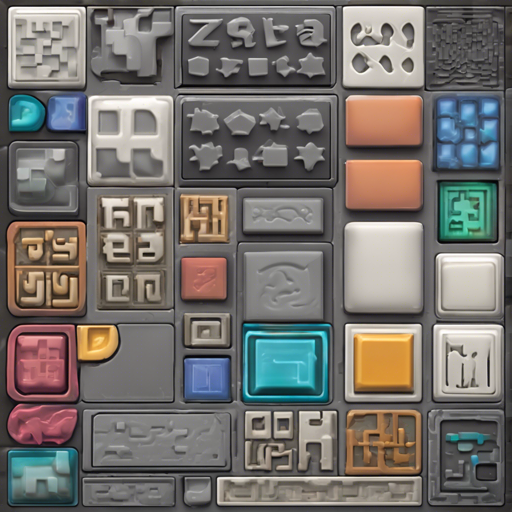If you’ve ever dreamed of creating your own roguelike game, look no further than Zircon! This user-friendly tile engine is the perfect tool to bring your gaming ideas to life. In this blog post, we’ll explore how to get started with Zircon, delve into its features, and offer some troubleshooting tips to enhance your experience.
Getting Started
To kick off your journey with Zircon, you’ll need to incorporate it into your project. You can go either of two routes: add it as a Maven dependency or dive straight into some skeleton projects (available for [Java](https://github.com/Hexworks/zircon.skeleton.java) and [Kotlin](https://github.com/Hexworks/zircon.skeleton.kotlin)). Both options provide you with a fully functional foundation.
Adding Zircon as a Maven Dependency
If you prefer using Maven, add the following code to your pom.xml file:
<dependencies>
<dependency>
<groupId>org.hexworks.zircon</groupId>
<artifactId>zircon.core-jvm</artifactId>
<version>2021.1.0-RELEASE</version>
</dependency>
<!-- If you want to use LibGDX instead of Swing -->
<dependency>
<groupId>org.hexworks.zircon</groupId>
<artifactId>zircon.jvm.swing</artifactId>
<version>2021.1.0-RELEASE</version>
</dependency>
</dependencies>Basic Usage
Once you’ve added Zircon to your project, you can start building with it! Imagine your world as a massive tile grid where each tile holds a piece of your creation. Here’s a simple analogy to understand the code:
Think of a tile grid as a painting canvas where each tile represents a canvas square. You can add color, shapes, and text just like you would with a paintbrush. In our case, the Zircon code lets you create the canvas (tile grid), pick your colors and brushes (tiles), and even write text (labels) to convey information.
public class Main {
public static void main(String[] args) {
TileGrid tileGrid = SwingApplications.startTileGrid(
AppConfig.newBuilder()
.withSize(60, 30)
.withDefaultTileset(CP437TilesetResources.rexPaint16x16())
.build());
Screen screen = Screen.create(tileGrid);
Label label = Components.label()
.withText("Hello, Zircon!")
.withAlignment(ComponentAlignments.alignmentWithin(tileGrid, ComponentAlignment.CENTER))
.build();
screen.addComponent(label);
screen.display();
screen.setTheme(ColorThemes.arc());
}
}In this example, we create a tile grid, set up a screen with a label, and display it all! Voilà, you have your first Zircon application!
Best Practices
To ensure a smooth development process, here are some tried-and-true best practices to follow with Zircon:
- Use builders for creating components. For example, you can create Tiles easily with
Tile.newBuilder(). - Refer to the resources class for specific external files, like tilesets.
- Utilize the [Zircon API](https://github.com/Hexworks/zircon.core/src/commonMain/kotlin/org/hexworks/zircon/api) for a plethora of useful functionalities.
- For complex features, dive into the documentation for rich guidance.
Features at a Glance
Zircon offers various features perfection for creating your game:
- Drawing: Use individual tiles or TileGraphics for more complex features.
- Input Handling: Listen for user inputs with ease!
- Layering: Add layers on top of tile grids for enhanced effects.
- Text GUI Components: Create interactive interfaces effortlessly.
- Animations: Bring your application to life with simple animation capabilities.
- Shape and Box Drawing: Draw various shapes and figures with a few commands.
- Fonts and Tilesets: Make use of built-in fonts and tilesets for customized appearances.
Troubleshooting
If you encounter any hiccups while working with Zircon, consider these troubleshooting ideas:
- Double-check that your Maven dependencies are correctly configured.
- Ensure that the content you’re trying to display fits within the set dimensions of your tile grid.
- Explore issues on the [Zircon GitHub](https://github.com/Hexworks/zircon/issues/new) if you face unexpected errors.
- For more insights, updates, or to collaborate on AI development projects, stay connected with fxis.ai.
Conclusion
At fxis.ai, we believe that such advancements are crucial for the future of AI, as they enable more comprehensive and effective solutions. Our team is continually exploring new methodologies to push the envelope in artificial intelligence, ensuring that our clients benefit from the latest technological innovations.

